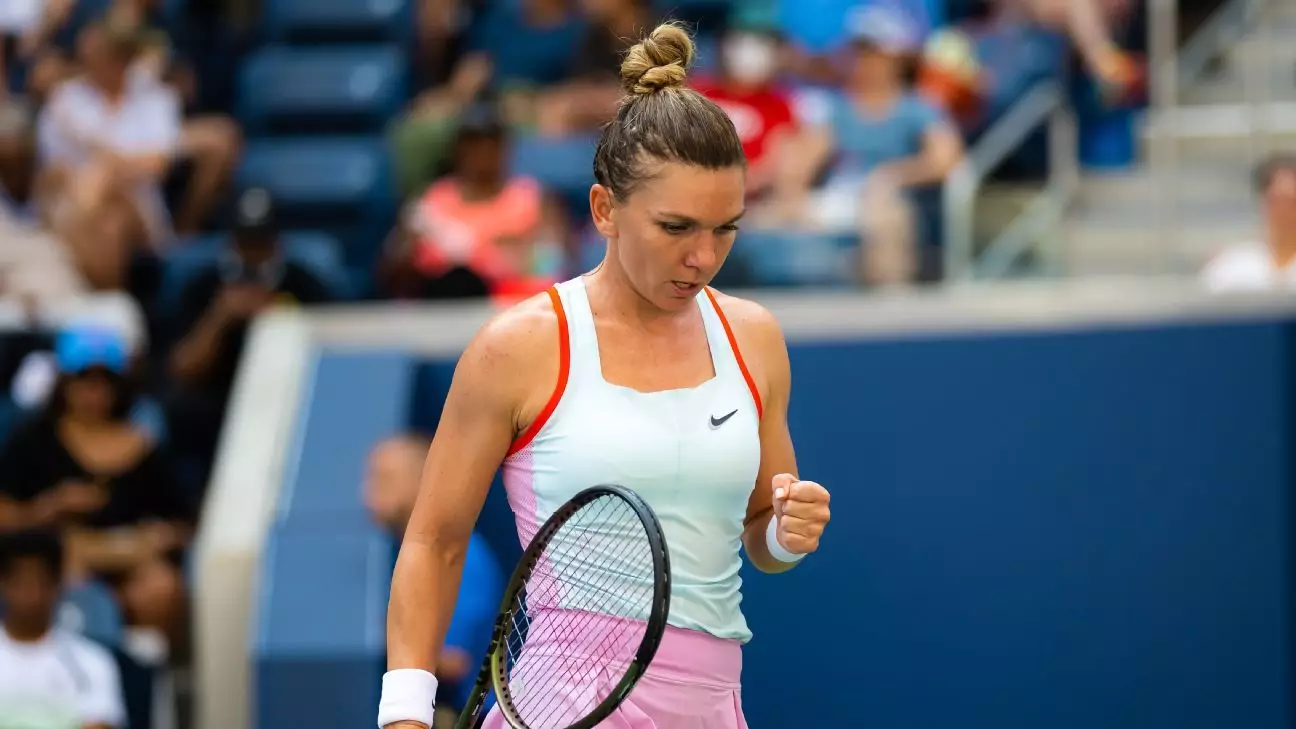On a cool Tuesday morning in Cluj, Romania, tennis fans gathered to witness the poignant farewell of one of the sport’s most celebrated athletes. Simona Halep, a two-time Grand Slam champion, officially announced her retirement from professional tennis at the age of 33. The announcement came following a disappointing first-round defeat at the Transylvania Open, where she lost 6-1, 6-1 to Italian player Lucia Bronzetti. Speaking directly to the crowd, Halep expressed a complex emotional state: “I don’t know if it’s with sadness or joy — I think I’m feeling both. But my soul is at peace with this decision.” This statement encapsulates the bittersweet nature of her departure, as it marks both the end of a remarkable career and the personal toll that accompanies such a decision.
Halep’s journey has been anything but straightforward. She has battled various injuries and underwent a doping suspension, which clouded her return to the sport. The retirement itself signifies not only the culmination of years of hard work and dedication but highlights the physical limitations that she has come to accept. In her own words, “My body can no longer handle as much as it used to.” This admission reflects an overarching theme in sports: the inevitability of physical decline, even for the most elite athletes.
Simona Halep’s impact on women’s tennis is undeniable. She became the world No. 1 for the first time in 2017 and went on to achieve remarkable success, including winning Wimbledon in 2019 against the legendary Serena Williams and the French Open in 2018. Her achievements are not only found in her trophies but also in her resilience; Halep was a three-time runner-up in Grand Slam tournaments and fought through numerous challenges, both on and off the court.
After her last major appearance at the 2022 US Open, where she faced an unexpected early exit, Halep’s world began to shift dramatically. The doping scandal that followed marred her reputation and cast a shadow over her illustrious career. She received a mandatory four-year ban after testing positive for the banned substance Roxadustat—a startling turn of events for an athlete of her caliber, who had often been celebrated for her sportsmanship and integrity. Though the Court of Arbitration for Sport later reduced her ban to nine months, the incident nevertheless disrupted her momentum and hampered her return to top form.
Halep’s competitive spirit was evident, but the physical toll of the sport took precedence. Despite her attempts to return to the court, she played only six matches since the ban was lifted and faced persistent injuries. “To be competitive again requires much more, and at this moment, it’s no longer possible,” she lamented. These words cast a harsh light on the challenges athletes face in maintaining peak performance, particularly when plagued by injuries.
Her battles have not only been with her competitors but also internally, as she wrestled with the mixed emotions surrounding her exit. The decision to retire was undoubtedly a difficult one, but it was one that she faced with a sense of clarity and acceptance. Halep is leaving the sport with a treasure trove of accomplishments—24 singles titles and over $40 million in prize money—yet the emotional weight of her departure reflects the chaotic nature of her recent years.
As Simona Halep closes this chapter of her life, her legacy as one of tennis’s greats remains intact. Athletes like Halep inspire future generations not only through their achievements but also through their transparency about the struggles they face in their careers. In her farewell, she leaves behind a sport forever altered by her contributions, inspiring countless young players to pursue their dreams.
Though her time on the court has come to an end, Halep’s journey highlights essential themes of perseverance and resilience. As fans and fellow players reflect on her career, it is evident that her spirit and passion for tennis will continue to resonate within the sport. The farewell may be bittersweet, but it serves as a powerful reminder of her extraordinary legacy.


Leave a Reply